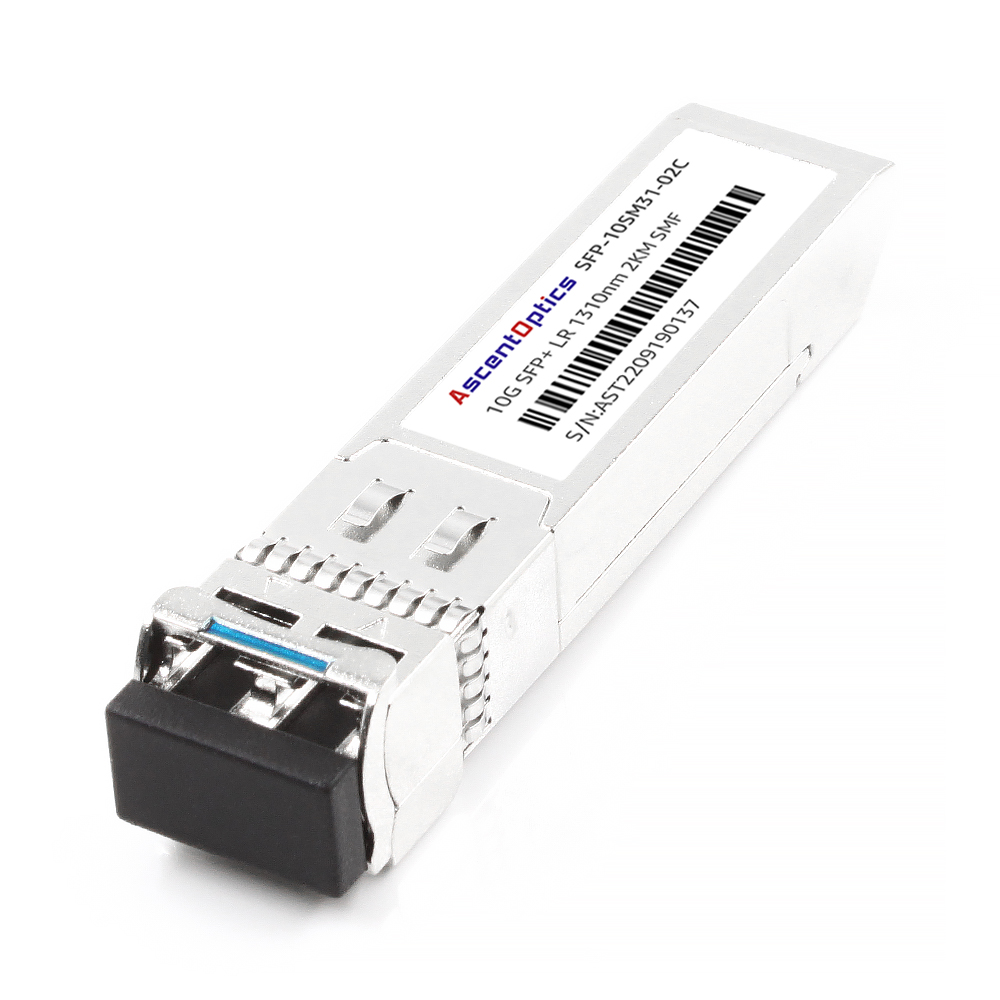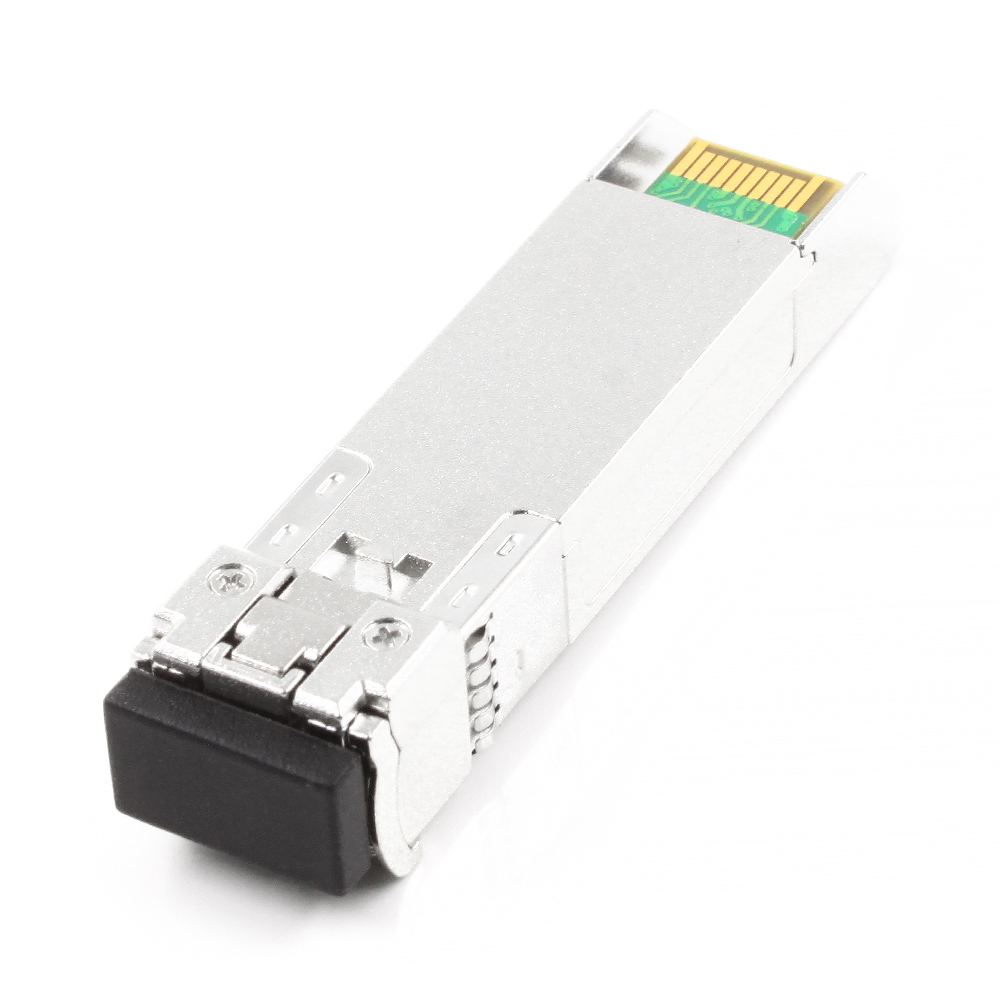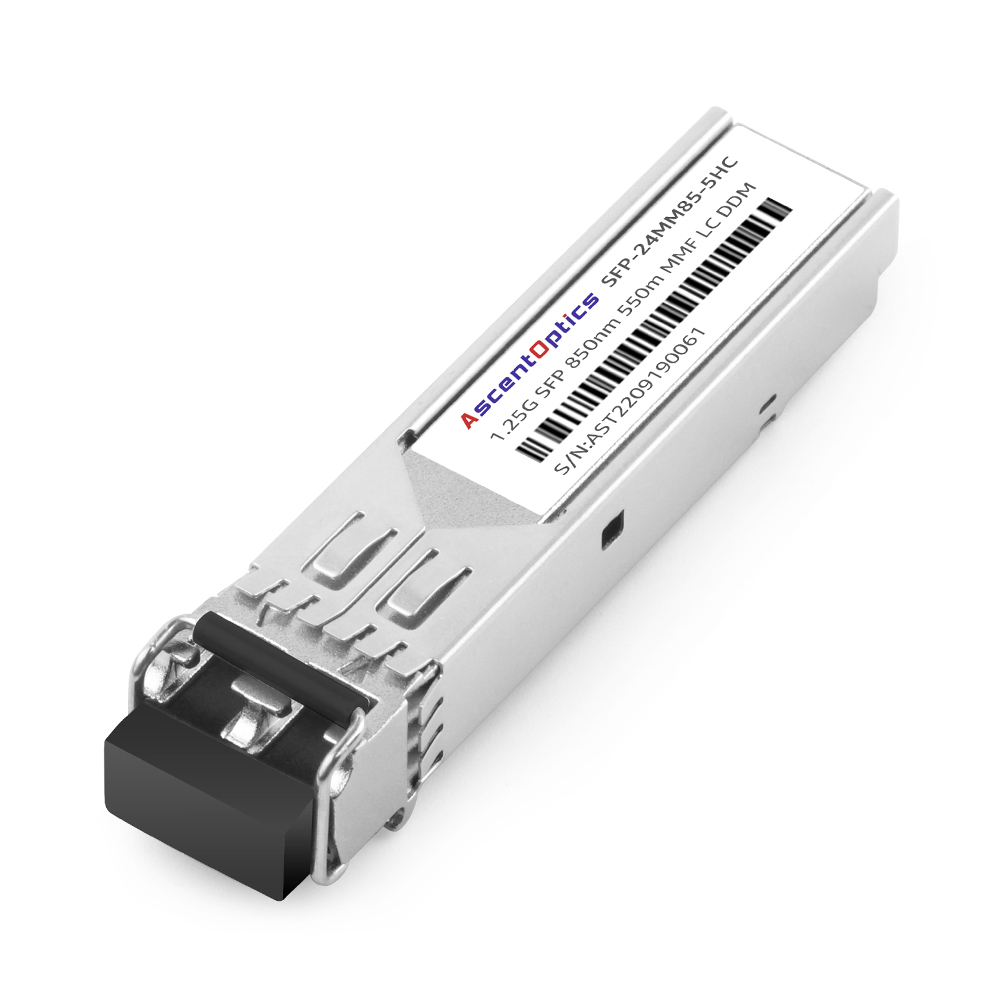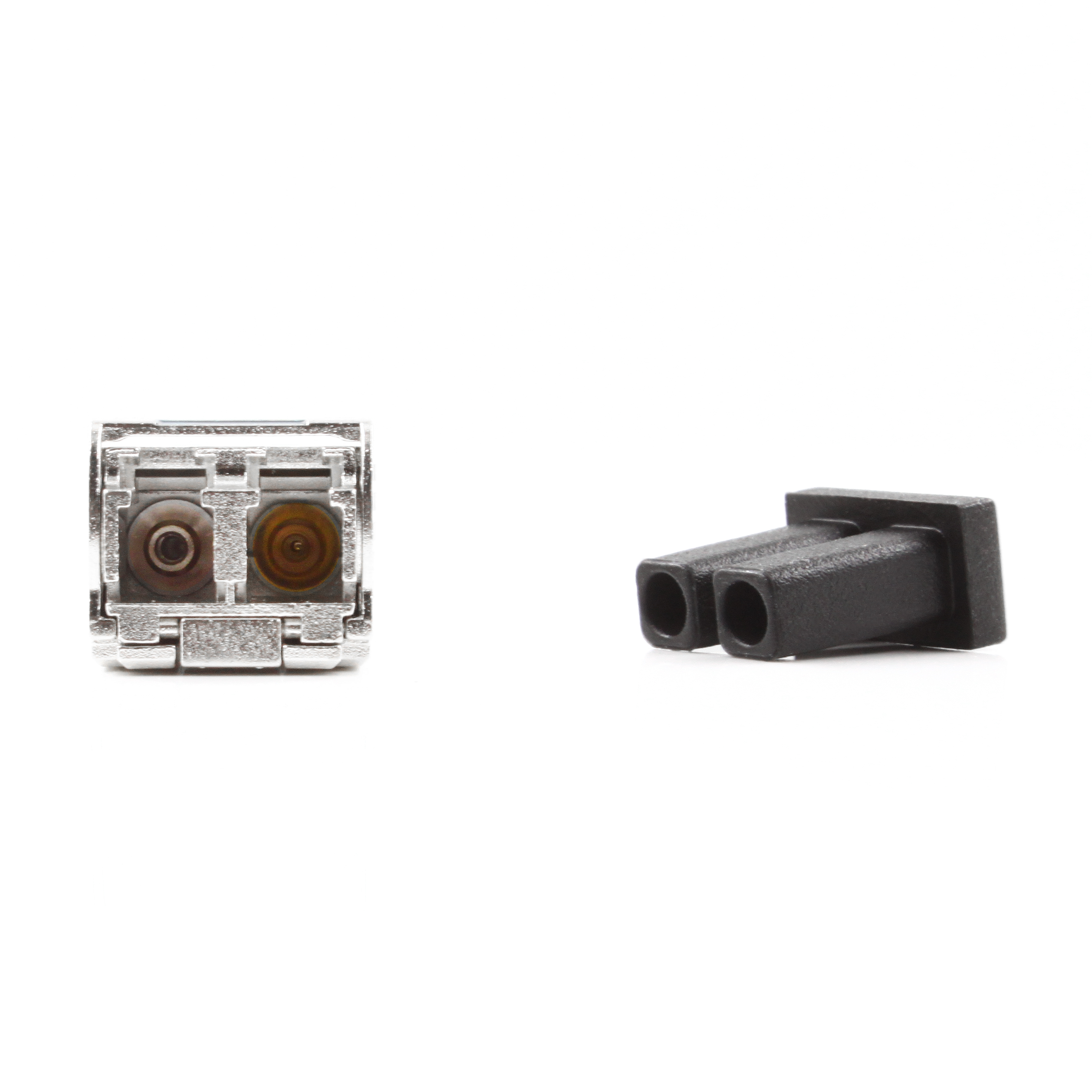Choosing the right hardware parts is essential when designing a network’s infrastructure in a secure and high-performing manner. Foremost in this regard is understanding Fortinet transceivers, including Small Form-Factor Pluggable (SFP) transceivers and optical transceivers, as they ensure smooth data flow across complex networks. This document is designed to assist IT decision-makers by presenting features and value propositions, along with use cases, against Fortinet’s transceiver offerings. It doesn’t matter whether the goal is to maximize network bandwidth, expand connectivity possibilities, or ensure seamless integration with Fortinet’s security devices; this guide will help you make the right choices.

The Fortinet SFP Module – SFP-10G-LRM-50 is a small-form-factor pluggable (SFP) transceiver module that allows for effective management of network systems and enhances their performance. These are Octal SFP transceiver modules that work seamlessly with 11 interfaces, including Ethernet and fiber optics. They are invaluable in achieving a flexible and scalable networked system by enabling multiple varied connections. The use of Fortinet SFPs helps manage network configuration and systems, improving bandwidth and connectivity, and further boosting the cost-benefit efficiency of the organization, thereby enhancing productivity.
The SFP transceiver technology enables efficient data transmission by converting electrical signals to optical signals and vice versa. These small, pluggable modules are critical for linking networking equipment, such as routers and switches, to fiber optic or Ethernet cables. Furthermore, SFP transceivers are designed to meet diverse network needs as they differ in data rates, distances, and wavelengths, thus offering configurable and adaptable networks. Their modular design enables easy upgrading and replacing, and therefore meeting changing network requirements.
Optical transceivers are essential components of modern networks, enabling data to be sent and received over fiber-optic cables. They perform the critical task of transforming electrical signals into optical ones and vice versa, enabling efficient communication in long-distance and high-speed networks. Diverse networking environments are provided with versatility and expandability by optical transceivers, which ensure compatibility and scalability by supporting a range of data rates and connection types. Optical transceivers are essential components for the flexible modularity and upgrading of networks, ensuring reliable and optimal performance due to their replaceable and modular characteristics.
Fortinet transceivers offer dependable and secure connections to networks and are specifically designed to work with Fortinet’s hardware units. They further improve performance by providing high-speed data transfer and low latency for critical applications. These San Fortinet recognized transceivers are dependable and compliant with various criteria, which facilitates easy integration, deployment, and maintenance across multiple networks. Their proven design and reliability while minimizing redundant incompatibility issues ensure consistent and streamlined network operations.

The Fortinet FN-TRAN-SFP+SR 10GBASE-SR module allows for the transmission of high-speed data over short distances using multimode fiber optic cables. The module operates at a wavelength of 850 nm and supports data rates of up to 10 Gbps, and thus works well with Fortinet’s FN-TRAN-SFP+SR compatible SFP. This module is perfect for intra-device connections within data centers or campus settings, which require a reach of up to 300 meters, depending on the type of multimode fiber used. The module’s effortless installation, with no disruption to ongoing network operations, adds reliability and efficiency for critical tasks in networking frameworks.
Transceivers operating at 850nm wavelengths and providing short-range links are typically used for high-speed data server, switch, and storage device interconnections within a data center. They meet the increasing bandwidth requirements of applications like virtualized spaces, cloud computing, and real-time data processing. The integration of Digital Diagnostic Monitoring (DOM) ensures their sustained operational dependability while enabling proactive maintenance, thus enhancing reliability for dense network topologies.

For optimal compatibility with Fortinet devices, it is necessary to choose Small Form-factor Pluggable (SFP) modules that align with the technical requirements and operational frameworks defined by Fortinet. SFP modules, which are Fortinet-compatible, can flawlessly interface with Fortinet firewalls, switches, and other networking devices, ensuring smooth and reliable network connections. These modules adhere to accepted industry standards, including IEEE 802.3 and MSA (Multi-Source Agreement), which facilitates compatibility in the network environment with other Fortinet transceiver modules.
Fortinet’s product line supports various SFP types, including single-mode fiber and multi-mode fiber, as well as copper-based modules, which cater to different network needs and integrate with Fortinet systems. When choosing compatible modules, data rates (1G, 10G, or 100G), transmission distance, and connector type must be accurate to avoid device incompatibility. For instance, some of Fortinet’s 10 G SFP ports may require SFP+ modules to function optimally, working seamlessly with high-speed, connection-demanding applications.
Without a doubt, the integration of Digital Optical Monitoring (DOM) further enhances troubleshooting capabilities by providing real-time monitoring of temperature, voltage, and optical signals for Fortinet-compatible SFP modules. This feature enhances network oversight and minimizes the time systems remain inactive by quickly locating probable faults, particularly for those using Fortinet systems.
Users must check Fortinet’s SFP Module Compatibility and Hardware Compatibility List (HCL) or documents from reputable third-party vendors to verify that the selected SFP modules are compatible. Reputable third-party manufacturers offer rigorously tested SFP modules for Fortinet devices, providing lower-cost alternatives to OEM modules that meet quality standards and industry requirements.
In choosing a transceiver module, the foremost elements to contemplate are compatibility, performance specifications, and financial resources. Start by checking the module’s compatibility with your Fortinet device through the hardware compatibility list (HCL). Then, analyze the performance requirements of your network, such as data transfer rates, distance, and whether it uses fiber or copper cables. Lastly, check for durable, reliable, and low-cost options, including certified third-party modules. Following this order ensures that your network infrastructure functions optimally and retains reliability over time.
When evaluating the effectiveness of Fortinet networks, pay special attention to key indicators such as throughput, latency, and packet loss. Evaluation should begin by assessing throughput, so you can gauge the highest data transfer rate that can be achieved by the system under normal conditions. Afterward, measure latency to find the range of delays present in the data transmission that can hinder real-time applications. Then check on packet loss to maintain the dependency and proficiency of your network. Use Fortinet’s performance monitoring tools, such as FortiAnalyzer or FortiManager, to gather and analyze information with the SFP optical transceivers. This aids in accurately optimizing the network according to the performance requirements.

The 1000BASE-SX SFP (Small Form-factor Pluggable) is optimized for short-distance communication using multimode fiber (MMF). Its operational wavelength is set at 850 nm, with a maximum data rate reaching 1 Gbps. The typical distance it can reach is between 220 meters and 550 meters, depending on the type of MMF being used. The module follows IEEE 802.3z standards and, like other SFP modules, it employs hot swap capabilities, allowing for easy installation and replacement. It is particularly used in data transmission centers, backbone network structures, and enterprise computer systems, maintaining reliable data transfer over short distances.
When evaluating options for devices operating at 850 nm wavelengths, parameters such as transmission distance, bandwidth performance, and fiber type compatibility need to be prioritized. Most modules using VCSEL (Vertical-Cavity Surface-Emitting Laser) technology are already operating in the region and are best suited for Multimode Fiber (MMF). With these modules, a maximum reach of 220 meters with OM1 fiber, 300 meters with OM3, and over 400 meters when paired with OM4 can be achieved.
Advanced implementations, such as those compliant with the OM5 standard, also enable Wavelength Division Multiplexing (WDM) for increased scalability in compatible Fortinet FN-TRAN-SFP+SR setups. In combination with OM5 fiber, modules, and Fortinet set-ups are capable of achieving more than 100 Gbps bandwidth over short distances. This is increasingly being adopted in emerging networks that rely heavily on data, such as cloud computing architectures.
Another key focus is the power efficiency along with the thermal behavior of 850 nm devices. Compared to systems using longer wavelength ranges, these systems consume relatively less energy. This can lead to operational cost reductions in areas with a high density of data centers.
The uptake of 850 nm wavelength solutions will vary by application and depend primarily on factors such as the distance the signal is transmitted, the existing infrastructure, and the overall economic implications. This wavelength remains the standard for short-range communications due to multimode fiber technology and its performance capabilities.
The optical communication field uses LC connectors, which are effective due to their small size and high performance. Increased port density is possible due to the LC connectors’ compatibility with compact environments, such as data centers and telecommunication networks, which require space-efficient solutions. Furthermore, LC connectors are reliable in terms of insertion loss and maintain a low performance level, which provides effective signal transmission. Along with these benefits, the connectors have broad compatibility with numerous devices and equipment, making them useful for a range of applications.

When selecting Fortinet-compatible transceivers, follow the instructions below.
When you follow these instructions, integrating with Fortinet equipment becomes simple and optimizes network performance.
Multimode fiber (MMF) is a category of optical fiber intended for the transmission of multiple lightwaves. This type of fiber is used with modules for communication over short distances because of its high bandwidth and small modal field span length. The optical parameters of MMF are determined by core diameter, wavelength, and distance. Most commonly used MMFs are OM3 and OM4, which are designed for systems with laser transmission, such as 850nm VCSELs. These fibers are well-suited for data centers and LANs, as well as for other applications where long, inexpensive fiber stretches are needed. Alignment with transceiver specifications is precision-dependent to ensure optimal cost-efficiency and operational streamlining.
Digital Optical Monitoring (DOM) is a crucial component of transceiver modules, as it tracks various functions in real-time. DOM metric functions include: transmitted and received optical power, laser bias current, supply voltage, and module temperature. Monitoring these metrics using DOM helps optimize performance, prolongs the network equipment’s service life, and enables proactive issue detection. Such optimizations can mitigate network outages while decreasing maintenance expenses, underscoring DOM’s relevance to effective network management.
A: The FN-TRAN-SX transceiver takes the form of a hot-pluggable 850nm 550m transceiver module, which means it can be installed without powering down the computer, and is optimized for Fortinet equipment. It provides gigabit Ethernet connectivity over multi-mode fiber, and is therefore classified as a small form-factor pluggable (SFP) module.
A: FN-TRAN-SFP+SR Fortinet module is classified as a 10G SFP transceiver operating at 10 Gbps of data rate. It is also compatible with Fortinet equipment and useful for distances of up to 300 meters with Multi-Mode Fiber (MMF) cables.
A: Indeed, many other Fortinet SFP transceivers are MSA compliant, meaning they can be used in conjunction with network equipment made by different companies, including Cisco, as long as those companies adhere to the same SFP standards. That said, these cases must be analyzed individually for verification of compatibility.
A: The primary distinction of the two lies in their data rates, applications, and more technical facets. While FN-TRAN-SX is lower gigabit ethernet networks, FN-TRAN-SFP+SR module covers 10g speeds and is thus intended for higher bandwidth applications.
A: The Fortinet FN-TRAN-SFP+SR modules are MSA compliant, so they should work with Cisco equipment. However, as with any third-party modules, cross-vendor equipment functionality is subject to strict validation.
A: Multi-mode fiber enables specific models of transceivers, like FN-TRAN-SFP+SR and FN-TRAN-SX, to transmit data over short distances, such as from one floor to another within a building or data center.
A: Users seeking the FN-TRAN SPSR peripheral can obtain the data sheet from Fortinet’s or authorized resellers’ sites because they offer all the documentation for their products, including the FN-TRAN transceivers.
A: The 10GBase-SR SFP transceiver that is Fortinet FN-TRAN-SFP+SR compatible should reach a maximum distance of 300 meters when used with OM3 multimode fiber cable.
A: Always cross-reference the official working documents and lists issued by Fortinet, which outline the operational limits of the Fortinet device in question. Confirm that the specifications of the transceiver module do not fall below required benchmarks.
1. Towards an ISGA Institute Modern Infrastructure Adaptation Using Fortinet SD-WAN Technology: Recommendations and Best Practices
2. Fortinet 2019 Operational Technology Security Trends Report